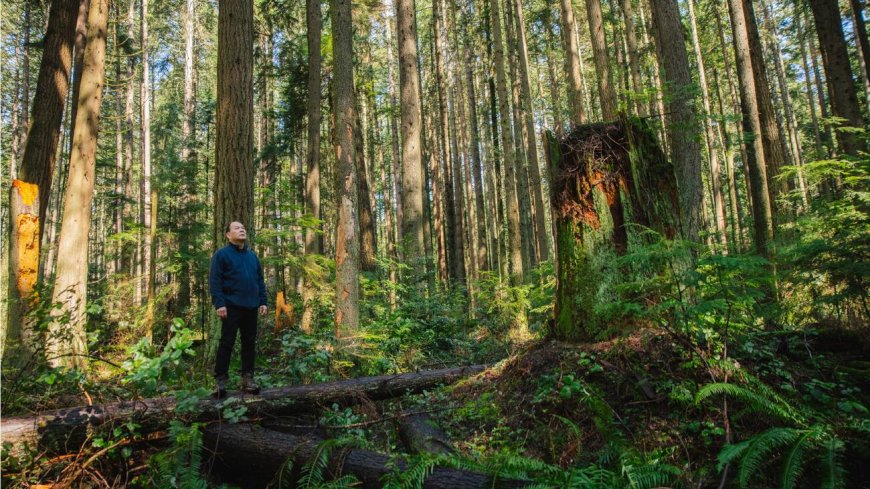The Rise of Forest Therapy: How Nature Heals Anxiety and Depression
Discover how forest therapy can reduce anxiety, lower stress, and improve mood. Learn the science behind nature’s healing power and how to practice Shinrin-Yoku.

In today’s fast-paced world, stress, anxiety, and depression are on the rise. While traditional treatments like therapy and medication play a crucial role, a growing number of people are turning to forest therapy—a practice that uses nature as a healing tool.
Also known as Shinrin-Yoku (or "forest bathing"), this practice originated in Japan and has gained global recognition for its scientifically backed mental health benefits. Studies show that spending time in nature can lower stress hormones, improve mood, and enhance overall well-being.
In this article, we’ll explore how forest therapy works, its mental health benefits, and how you can practice it to feel calmer, happier, and more balanced.
What is Forest Therapy?
Forest therapy is the intentional practice of immersing yourself in a natural setting—a forest, park, or any green space—while engaging your senses. Unlike hiking or exercising outdoors, it’s not about covering miles or burning calories; instead, it’s about slowing down, being mindful, and connecting with nature.
The concept of Shinrin-Yoku (森林浴) translates to "forest bathing," meaning absorbing the atmosphere of the forest with all your senses—seeing, smelling, touching, and even listening to the natural world around you.
How Forest Therapy Heals Anxiety and Depression
1. Reduces Stress and Lowers Cortisol Levels
One of the most immediate benefits of forest therapy is stress reduction. Studies show that spending time in nature lowers cortisol, the body's primary stress hormone. This leads to:
✔ Lower heart rate and blood pressure
✔ Reduced muscle tension
✔ A calmer, more relaxed state of mind
A Japanese study found that forest bathers had 12% lower cortisol levels compared to those in urban settings. The simple act of being in nature helps the body shift from "fight or flight" mode to "rest and digest" mode.
2. Boosts Mood and Fights Depression
Spending time in a forest can increase serotonin and dopamine levels—the "feel-good" neurotransmitters that regulate mood. Nature exposure has been linked to:
✔ Lower rates of depression
✔ Improved emotional resilience
✔ A greater sense of well-being
A 2015 study in the journal Environmental Health and Preventive Medicine found that people who walked in a forest for 90 minutes had lower activity in the part of the brain linked to rumination (negative thought patterns).
3. Enhances Focus and Reduces Mental Fatigue
If you often feel mentally drained, forest therapy can help. Nature acts as a "reset button" for the brain, improving:
✔ Focus and concentration
✔ Creativity and problem-solving skills
✔ Cognitive function
This is particularly beneficial for people with ADHD or chronic stress, as nature exposure has been shown to enhance attention span and reduce overstimulation.
4. Strengthens the Immune System
Forests release phytoncides—natural compounds found in trees that have antibacterial and anti-inflammatory properties. When inhaled, they:
✔ Boost white blood cell activity
✔ Improve the body's ability to fight infections
✔ Lower inflammation levels (linked to depression and anxiety)
A study found that people who spent time in forests had increased levels of natural killer (NK) cells, which help fight viruses and tumors.
5. Promotes Mindfulness and Emotional Balance
Forest therapy encourages present-moment awareness, which is key to managing anxiety and depression. Engaging your senses in nature helps you:
✔ Break free from negative thought loops
✔ Feel more grounded and centered
✔ Cultivate a deeper sense of peace
It’s a natural way to practice mindfulness without meditation, making it an excellent alternative for those who struggle with traditional mindfulness exercises.
How to Practice Forest Therapy
You don’t need to live near a forest to benefit from this practice. Here’s how you can get started:
1. Find a Green Space
- Visit a local park, botanical garden, or nature trail.
- If possible, choose a place with minimal human-made noise.
2. Slow Down and Be Present
- Walk slowly and mindfully—it’s not about exercise, but connection.
- Pay attention to the colors, textures, and movements of nature.
3. Engage Your Senses
- Listen to the rustling leaves, birdsong, or running water.
- Smell the trees, flowers, or fresh earth.
- Touch the bark of a tree, the softness of moss, or the coolness of a stone.
4. Breathe Deeply
- Take slow, deep breaths to absorb oxygen-rich forest air.
- Try 4-7-8 breathing: Inhale for 4 seconds, hold for 7, exhale for 8.
5. Sit and Observe
- Find a quiet spot to sit and just be.
- Notice how your mind and body feel in the moment.
6. Disconnect from Technology
- Turn off your phone or put it on silent mode.
- Give yourself at least 20-30 minutes of uninterrupted nature time.
Can You Practice Forest Therapy Indoors?
If you don’t have access to a natural space, you can still experience some benefits of forest therapy at home:
???? Surround yourself with plants
???? Listen to nature sounds (birds, rain, forest ambience)
???? Use essential oils like pine, cedarwood, or eucalyptus
???? Watch nature documentaries or virtual forest walks
While it’s not the same as being outdoors, these small changes can help bring nature’s calming effects into your daily life.
Conclusion
Forest therapy is more than just a walk in the woods—it’s a science-backed method for reducing stress, boosting mood, and improving overall mental health. In a world filled with constant noise and digital distractions, spending time in nature offers a much-needed reset for the mind and body.
Whether you have access to a lush forest or just a small park nearby, taking the time to connect with nature can profoundly impact your well-being. So, the next time you're feeling anxious or overwhelmed, step outside, take a deep breath, and let the healing power of nature work its magic.
What's Your Reaction?
 Like
1
Like
1
 Dislike
0
Dislike
0
 Love
1
Love
1
 Funny
0
Funny
0
 Angry
0
Angry
0
 Sad
0
Sad
0
 Wow
0
Wow
0



















































